Are you an LGBTQ+ individual looking for the perfect place to settle down in Mexico? Understanding where expats live in Mexico, especially within supportive and welcoming communities, is crucial. This guide, brought to you by gaymexico.net, explores the top destinations where expats thrive, providing insights into the local culture, amenities, and LGBTQ+-friendliness. Discover your ideal haven and embrace the vibrant life Mexico has to offer. Consider these havens for community, cost of living, and cultural richness, ensuring a fulfilling lifestyle.
1. Puerto Vallarta: A Premier Coastal Haven for Expats
Puerto Vallarta has thrived as an expat sanctuary for over six decades. This locale, once a quaint village nestled along Mexico’s Pacific coast, has blossomed into a significant international resort. Its urban expanse stretches almost 30 miles along the scenic Banderas Bay. The region, spanning from Puerto Vallarta up to the bay’s northernmost point at Punta de Mita, encompasses charming towns such as Bucerias, San Pancho, and Sayulita, collectively known as the Riviera Nayarit.
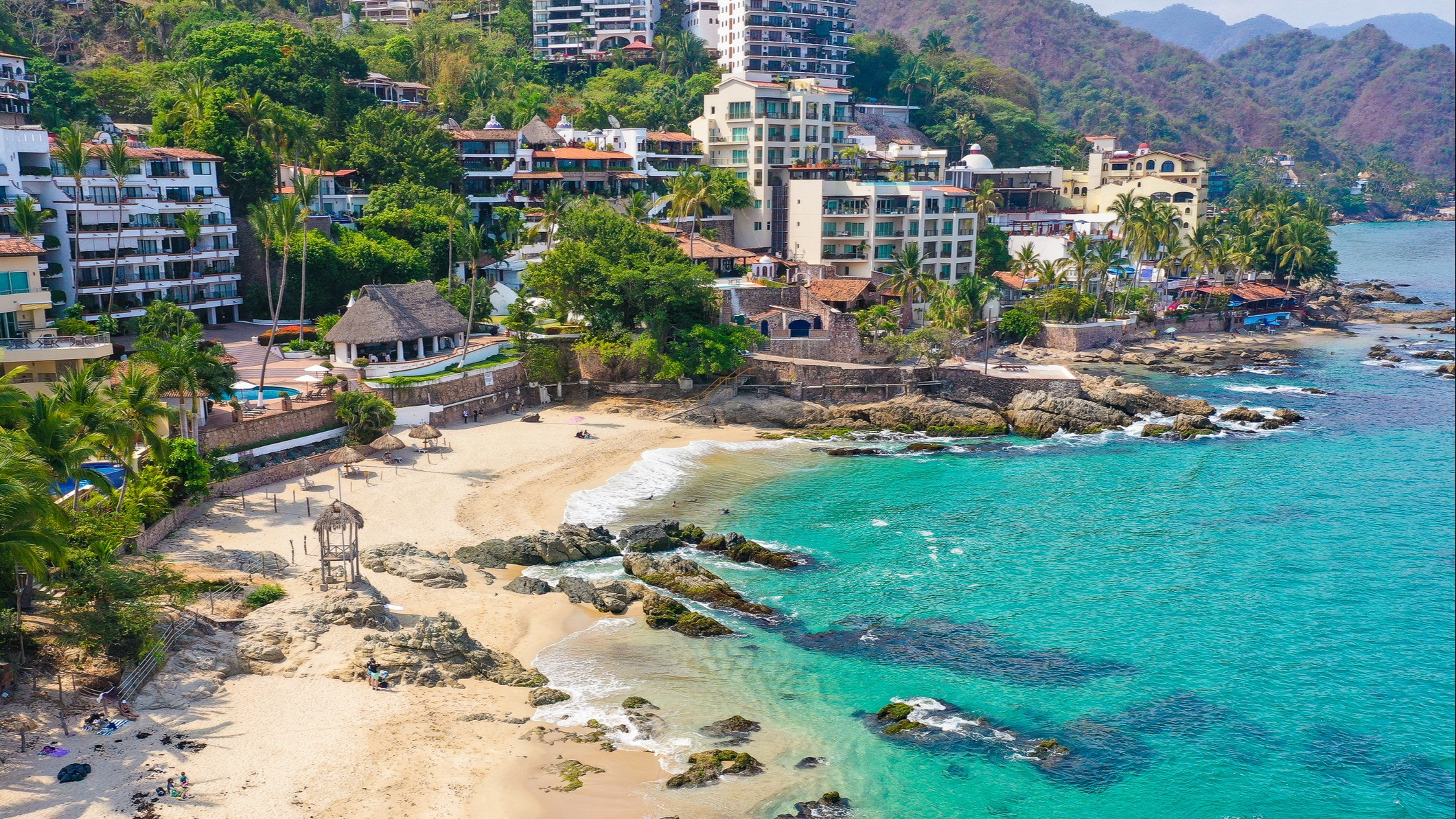 Puerto Vallarta Boardwalk
Puerto Vallarta Boardwalk
The Riviera Nayarit boasts a seemingly endless array of activities, thanks to its natural allure and well-developed tourist infrastructure. Stroll along the malecón (boardwalk) in the downtown area, exploring the boutiques, cafes, and restaurants. Spend a day on any of the numerous golf courses around Puerto Vallarta. Escape the heat in the nearby Sierra Madre mountains, where you can enjoy exhilarating activities such as hiking, biking, and canopy tours. Near the Bay of Banderas, engage in whale watching, boat tours, fishing, sailing, dolphin excursions, kitesurfing, windsurfing, and parasailing.
Is Puerto Vallarta LGBTQ+ Friendly?
Yes, Puerto Vallarta is very LGBTQ+ friendly. It’s known as one of the most welcoming destinations in Mexico for the LGBTQ+ community, featuring a vibrant gay scene with numerous bars, clubs, and hotels catering to LGBTQ+ travelers and residents.
Puerto Vallarta’s Zona Romántica (Romantic Zone) is particularly popular. According to a 2023 article by Forbes, this area is the heart of the LGBTQ+ scene in Puerto Vallarta, offering a welcoming atmosphere and a variety of entertainment options.
What are the Benefits of Living in Puerto Vallarta?
- Accessibility: Quick flights from Puerto Vallarta’s international airport to the U.S.
- Healthcare: A popular destination for medical tourism with top hospitals.
- Activities: Countless recreational options.
- Community: A thriving and welcoming environment for LGBTQ+ individuals.
What is the Cost of Living in Puerto Vallarta?
The cost of living in Puerto Vallarta is generally lower than in many U.S. cities. According to Numbeo, consumer prices, including rent, are about 50% lower in Puerto Vallarta than in Los Angeles. A single person can live comfortably on around $1,500 to $3,000 USD per month, depending on lifestyle choices.
What is the Weather Like in Puerto Vallarta?
Puerto Vallarta has a tropical climate with warm temperatures year-round. The average daily high temperature ranges from the mid-80s°F (around 29°C) in the winter months to the low 90s°F (around 33°C) in the summer.
2. San Miguel de Allende: Immerse Yourself in Culture
San Miguel de Allende, regarded as one of Mexico’s most beautiful small towns, is a Spanish-colonial gem that glows in pastel hues. With a rich tradition of arts and crafts, San Miguel is brimming with small shops where you can admire and purchase pottery, paintings, sculptures, and hammered-tin mirrors. Explore the numerous art galleries, restaurants, and scenic plazas that define this charming town.
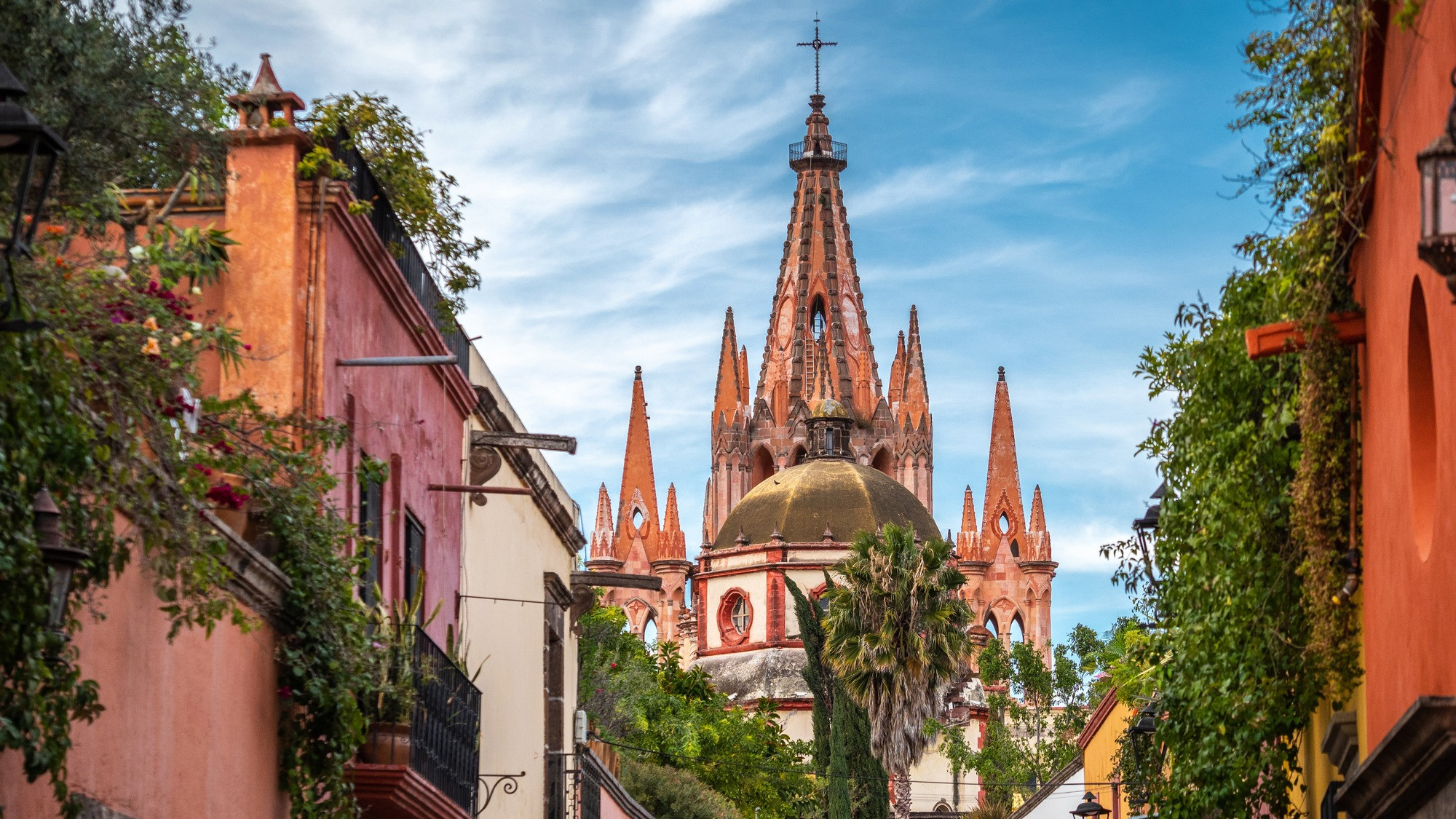 San Miguel de Allende street
San Miguel de Allende street
Like Puerto Vallarta, San Miguel is home to thousands of expats from around the world. English is widely spoken, and Spanish is also prevalent. The high-desert climate, characterized by warm days and cool nights, appeals to many North Americans. Of the 140,000 people living in the metropolitan area, approximately 10,000 are expats.
Is San Miguel de Allende LGBTQ+ Friendly?
San Miguel de Allende is known for its inclusive and welcoming atmosphere, making it a popular destination for LGBTQ+ expats and travelers. While it may not have as many explicitly LGBTQ+-focused venues as Puerto Vallarta, its overall tolerance and acceptance are high.
What are the Benefits of Living in San Miguel de Allende?
- Cultural Richness: A vibrant arts scene and colonial architecture.
- Climate: Pleasant high-desert climate with warm days and cool nights.
- Community: A large and active expat community.
What is the Cost of Living in San Miguel de Allende?
The cost of living in San Miguel de Allende is higher than in some other parts of Mexico but still generally lower than in many U.S. cities. Expect to spend around $1,800 to $3,500 USD per month to live comfortably, depending on your lifestyle.
What are the Travel Options to San Miguel de Allende?
- Airports: Fly into León (2 hours away) or Querétaro (1 hour away).
- Bus: Take a bus from Mexico City (3 hours away).
3. Mérida: Experience Colonial City Living
Mérida, like San Miguel, is a Spanish-colonial city, but it offers a very different experience. Unlike the small-town vibe of San Miguel, Mérida is a metropolis of nearly a million people, complete with universities, major corporations, museums, and an international airport with direct flights to the U.S. Mérida is situated on the semi-tropical Yucatán Peninsula, just half an hour from the Yucatán Gulf Coast, where you can find white-sand beaches and affordable beach homes.
 Merida Streets
Merida Streets
Mérida is one of the safest cities in Mexico. Despite its large population, the city retains a smaller, more intimate feel. The centro is historic and restored, while the outskirts and suburbs are thoroughly modern.
Is Mérida LGBTQ+ Friendly?
Mérida is increasingly recognized for its openness and acceptance, making it a favorable location for LGBTQ+ individuals. Although it might not have a prominent gay scene like Puerto Vallarta, its general tolerance and progressive attitudes are notable.
What are the Benefits of Living in Mérida?
- Safety: One of the safest cities in Mexico.
- Modern Amenities: Universities, corporations, and an international airport.
- Proximity to Beaches: Just half an hour from the Yucatán Gulf Coast.
What is the Cost of Living in Mérida?
The cost of living in Mérida is relatively low compared to many North American cities. You can live comfortably on around $1,200 to $2,500 USD per month, depending on your lifestyle.
What is the Expat Community Like in Mérida?
Mérida’s expat community is smaller compared to Puerto Vallarta or San Miguel, numbering around 4,000. This offers a great opportunity to immerse yourself in the local culture and learn Spanish.
4. Lake Chapala: Mexico’s Largest Expat Hotspot
Lake Chapala is Mexico’s largest lake and home to the largest concentration of U.S. expats in the world. Expats are drawn to the area’s homes with gentle arches, hand-painted tiles, and year-round blooming gardens. It’s a place where you can easily afford a cook, a maid, and a gardener.
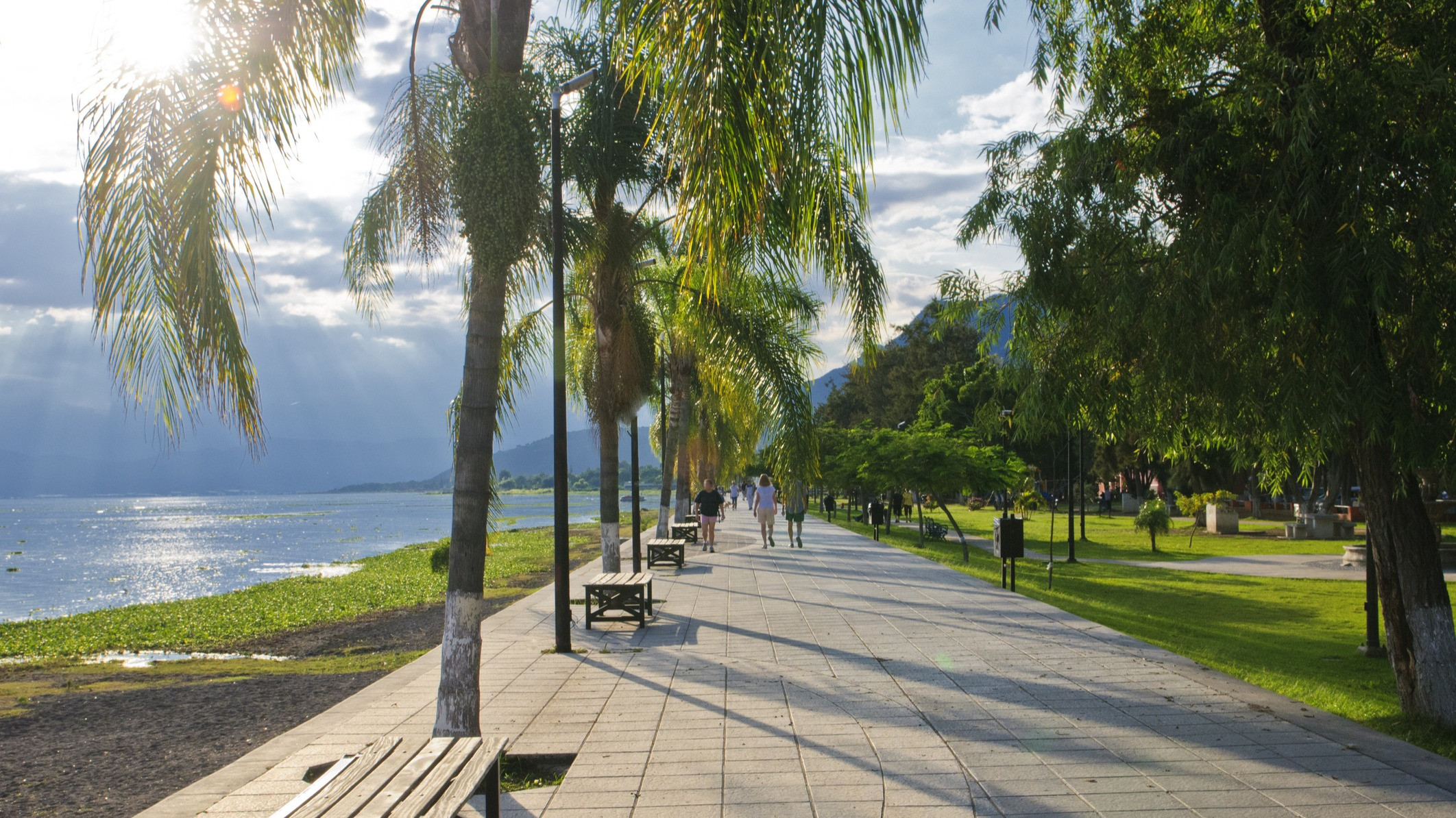 Lake Chapala Scenery
Lake Chapala Scenery
Located about a mile high, Lake Chapala enjoys a delightful climate. The coolest month, January, sees temperatures around 71°F, while the warmest month, May, has highs around 84°F. Guadalajara, a city of over 5 million residents, is only 45 minutes away by car.
Is Lake Chapala LGBTQ+ Friendly?
Lake Chapala has a growing LGBTQ+ community, and while it may not be as overtly visible as in Puerto Vallarta, it is generally welcoming. The region’s relaxed and accepting atmosphere makes it a comfortable place for LGBTQ+ expats to live.
What are the Benefits of Living in Lake Chapala?
- Large Expat Community: The largest concentration of U.S. expats in the world.
- Climate: Delightful year-round climate.
- Affordability: Affordable cost of living with options for household help.
- Proximity to Guadalajara: Only 45 minutes away from a major city.
What Activities are Available in Lake Chapala?
Real estate shoppers are often impressed with the area’s cultural and sporting opportunities, including English-language theater, frequent concerts, garden clubs, golf, tennis, hiking, yoga, and horseback riding.
What are the Communities Around Lake Chapala?
- Chapala: The largest town with taverns, shops, cafes, and high-quality restaurants.
- Vista del Lago: Features a popular country club and golf course.
- Ajijic: A haven for artists and writers, with a large outdoor market every Wednesday.
- San Antonio: A village with beautiful, secluded houses.
5. Tulúm: A Bohemian Vibe on the Riviera Maya
Tulúm is a charming and growing resort town at the southern end of Mexico’s Riviera Maya. With a palpable bohemian vibe, a plentiful scattering of yoga practitioners, and therapeutic massage businesses, this growing community retains its backpacker roots. Many feel the presence of the ancient Maya culture, which dominated this region over 1,000 years ago.
 Tulum Beach
Tulum Beach
Located about 80 miles and two hours south of Cancún, Tulúm is no longer a hidden gem but is now well into the development phase. Living in the central town area does not require a car, and walking and bicycling are both quite popular.
Is Tulúm LGBTQ+ Friendly?
Tulúm is becoming increasingly popular with LGBTQ+ travelers and expats. Its laid-back, open-minded atmosphere makes it a welcoming place, though it may not have a large, dedicated LGBTQ+ scene.
What are the Benefits of Living in Tulúm?
- Caribbean Lifestyle: Warm, turquoise Caribbean waters and perfect beaches.
- Activities: Opportunities for fishing, scuba diving, and snorkeling.
- Walkability: Easy to get around without a car.
What is the Weather Like in Tulúm?
Tulúm offers a tropical climate with temperatures averaging in the 80s°F.
What is the Population of Tulúm?
With the introduction of new, modern homes and condos, the population is thought to be well over 40,000 and continues to rise as more people seek an affordable Caribbean lifestyle off the beaten path.
6. Huatulco: Discover a Hidden Gem in Southern Mexico
Huatulco is a development planned by FONATUR, the Mexican government’s national trust fund for tourism development. It was one of five destinations picked by FONATUR more than 40 years ago as having world-class potential.
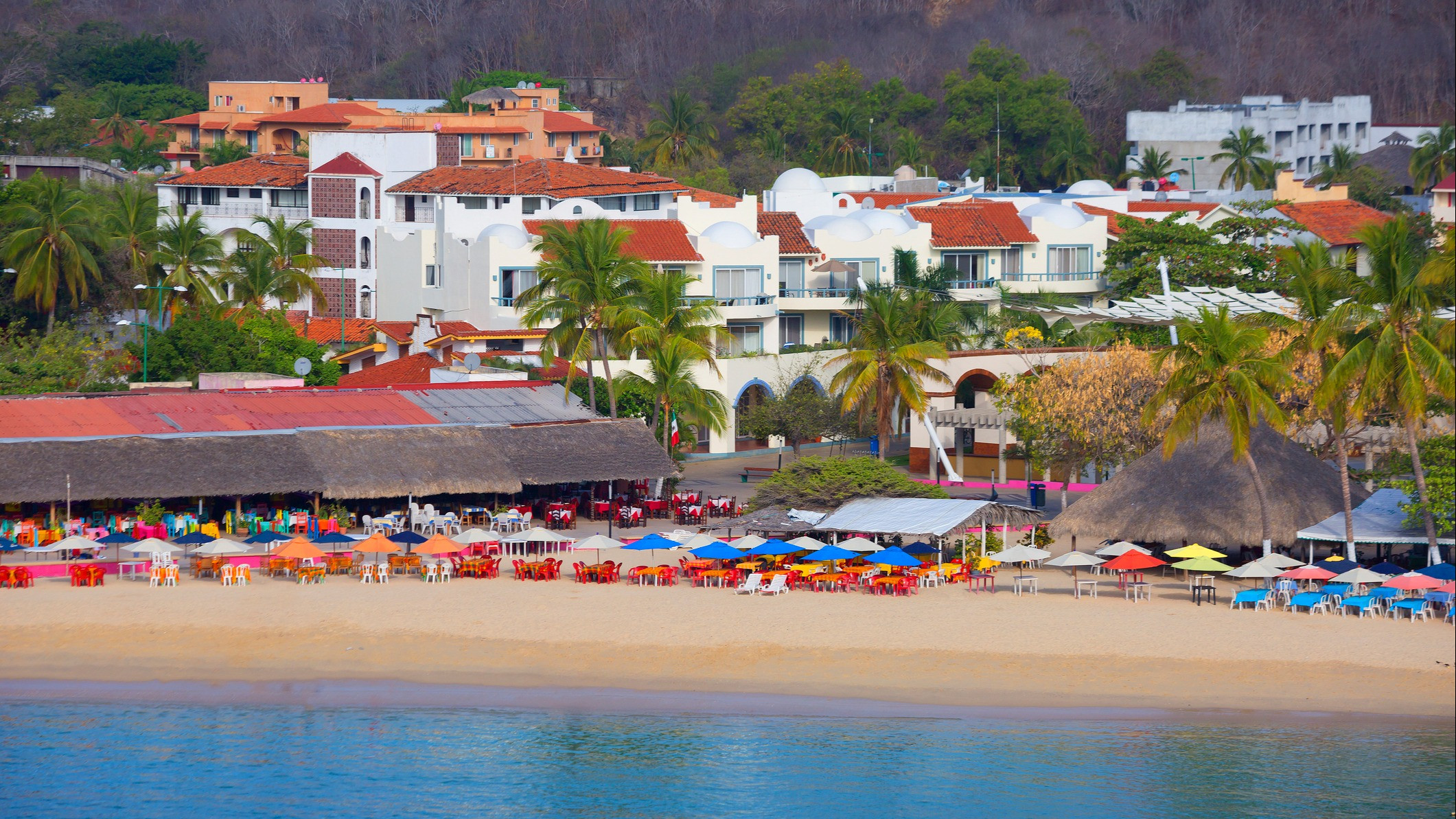 Huatulco Beach
Huatulco Beach
Huatulco is split into three main areas: La Crucecita (the main town), Santa Cruz (the marina and cruise ship dock), and Chahué (a seaside, mostly residential neighborhood). Despite its small population, Huatulco has an international airport with direct jet service to the U.K., U.S., and Canada, as well as to other parts of Mexico.
Is Huatulco LGBTQ+ Friendly?
Huatulco is a more conservative area compared to places like Puerto Vallarta, but it is generally welcoming to LGBTQ+ individuals. As it continues to develop as a tourist destination, it is becoming more open and accepting.
What are the Benefits of Living in Huatulco?
- Emerging Destination: Potential for growth and development.
- Infrastructure: Excellent water treatment facilities and an international airport.
- Activities: Fishing, snorkeling, and diving.
What is the Population of Huatulco?
There are only about 56,000 residents, according to official figures, with about 1,000 being expats or pre-retirement, part-time visitors who own property.
What Amenities are Available in Huatulco?
Huatulco has plenty of restaurant options and a variety of cuisines.
7. Los Cabos: Live the Beach Lover’s Dream
Los Cabos, located at the far southern tip of Mexico’s Baja California peninsula, is a long-time favorite destination for vacationers and expats. There are two main towns here, on opposite sides of the peninsula: Cabo San Lucas, with its vast marina, shopping, and nightlife, and San José del Cabo, known for art galleries and gourmet dining.
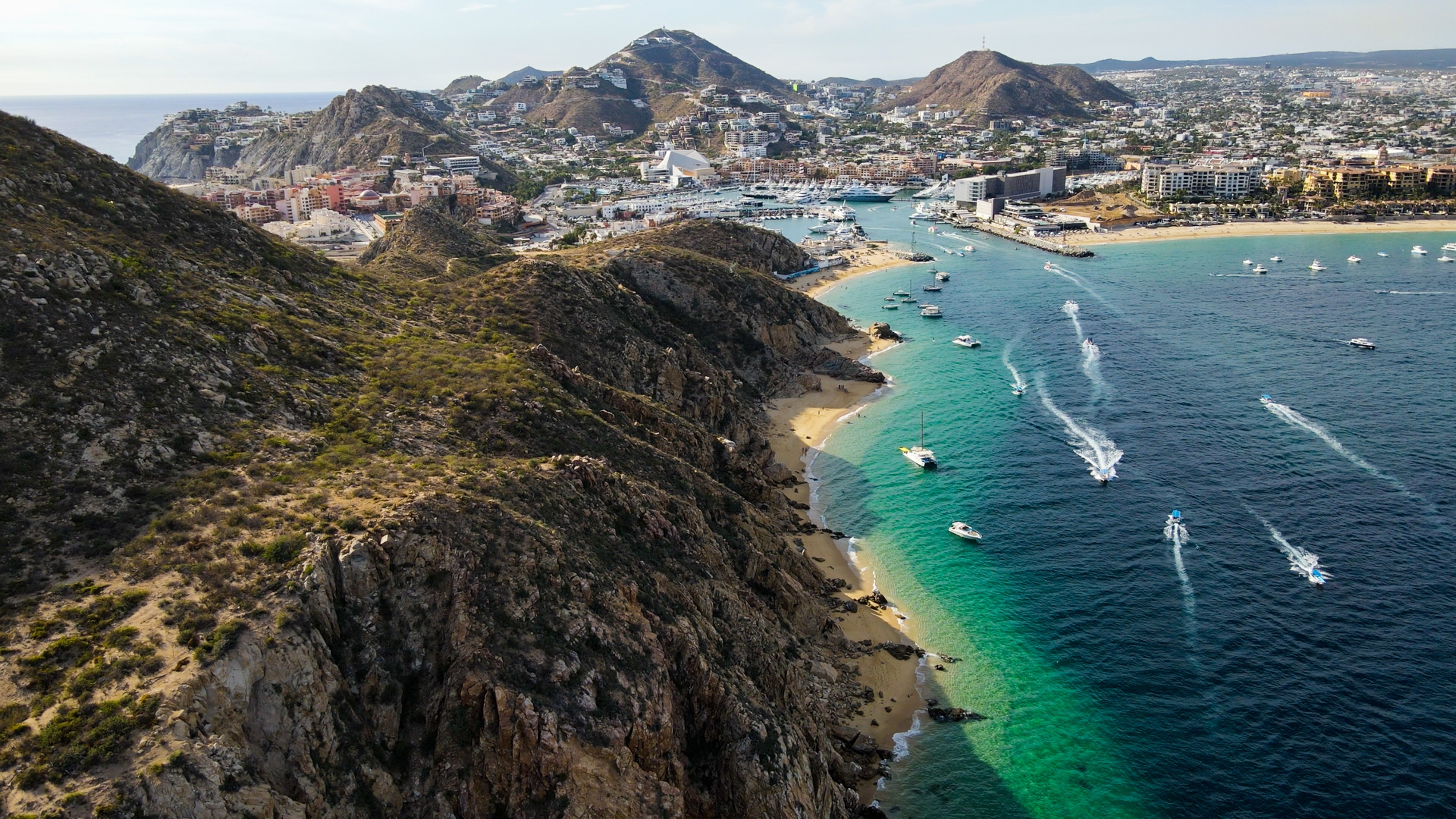 Los Cabos Coastline
Los Cabos Coastline
The Corridor, a modern highway, connects the two towns in about 30 minutes. All along this Corridor are resorts, hotels, medical clinics, shopping centers, condos, and gated home communities.
Is Los Cabos LGBTQ+ Friendly?
Los Cabos is increasingly catering to LGBTQ+ travelers and residents. While it may not have a large, concentrated LGBTQ+ scene, its growing cosmopolitan vibe and tourist-friendly atmosphere make it a welcoming place.
What are the Benefits of Living in Los Cabos?
- Modern Conveniences: Any modern convenience you’d like can be found in Los Cabos.
- Beaches: Spectacular beaches, including 22 designated as Blue Flag.
- Activities: Golf courses, world-class sport fishing, sunset cruises, and more.
What are the Main Towns in Los Cabos?
- Cabo San Lucas: Known for its vast marina, shopping, and nightlife.
- San José del Cabo: Known for art galleries and gourmet dining.
What Can You Find Along the Corridor?
Along the Corridor, you will find resorts, hotels, medical clinics, shopping centers, condos, and gated home communities.
Comparing Expat Destinations in Mexico: A Quick Guide
| Destination | LGBTQ+ Friendly | Cost of Living | Climate | Key Features |
|---|---|---|---|---|
| Puerto Vallarta | Very High | Moderate | Tropical | Vibrant gay scene, beaches, activities |
| San Miguel de Allende | High | Moderate-High | High-Desert | Cultural richness, art scene, expat community |
| Mérida | Moderate | Low | Semi-Tropical | Safety, modern amenities, proximity to beaches |
| Lake Chapala | Moderate | Low | Mild | Large expat community, affordable, proximity to Guadalajara |
| Tulúm | Moderate | Moderate | Tropical | Caribbean lifestyle, beaches, walkability |
| Huatulco | Moderate | Low | Tropical | Emerging destination, infrastructure, fishing |
| Los Cabos | Moderate | High | Desert with Coastal Breeze | Modern conveniences, beaches, golf, sport fishing |
Understanding the Search Intent Behind “Where Do Expats Live in Mexico”
When people search for “Where Do Expats Live In Mexico,” they typically have one of several intentions:
- Information Gathering: They want a general overview of popular expat destinations in Mexico.
- Community Research: They are looking for places where they can find a supportive expat community.
- Cost of Living Analysis: They want to compare the cost of living in different Mexican cities and towns.
- Lifestyle Assessment: They are trying to determine which location best fits their desired lifestyle (e.g., beach living, cultural immersion, etc.).
- Relocation Planning: They are actively planning a move and need specific information about housing, healthcare, and other practical considerations.
Why Choose Mexico?
Mexico has become a popular destination for expats due to several compelling reasons:
- Affordable Cost of Living: Compared to many Western countries, Mexico offers a significantly lower cost of living, making it possible to enjoy a comfortable lifestyle on a smaller budget.
- Rich Culture and History: From ancient ruins to colonial cities, Mexico boasts a rich cultural heritage that is both fascinating and welcoming.
- Diverse Landscapes: Mexico offers a variety of landscapes, from tropical beaches to high-desert climates, ensuring there is something for everyone.
- Proximity to the U.S. and Canada: Easy access to the U.S. and Canada makes it convenient for expats to visit family and friends back home.
- Welcoming People: Mexicans are known for their hospitality and warmth, making it easy for expats to feel at home.
According to the Migration Policy Institute, as of 2023, Mexico hosts a significant number of immigrants from the United States, drawn by these factors.
Navigating LGBTQ+ Life in Mexico
While Mexico has made significant strides in LGBTQ+ rights, attitudes can vary depending on the region. Major cities and tourist destinations tend to be more accepting and progressive, while more rural areas may hold more traditional views.
According to Human Rights Watch, Mexico has legalized same-sex marriage nationwide, and anti-discrimination laws are in place to protect LGBTQ+ individuals. However, it is always advisable to exercise caution and be aware of local customs and attitudes.
Resources for LGBTQ+ Expats in Mexico
- GayMexico.net: Your go-to source for LGBTQ+ travel and community information in Mexico.
- Local LGBTQ+ Organizations: Connect with local organizations for support and community events.
- Expat Forums: Online forums and social media groups can provide valuable insights and advice from other LGBTQ+ expats in Mexico.
FAQ: Your Questions About Expat Life in Mexico Answered
1. What is the best place in Mexico for expats to live?
The best place depends on your preferences. Puerto Vallarta is great for LGBTQ+ expats seeking a vibrant scene, while Lake Chapala is ideal for those wanting a large expat community.
2. Is Mexico safe for expats?
Mexico has safe areas for expats, particularly in tourist destinations and larger cities. Researching specific areas is essential for safety.
3. What is the cost of living in Mexico compared to the U.S.?
The cost of living in Mexico is generally lower. Consumer prices, including rent, are often significantly less than in major U.S. cities.
4. Do I need to speak Spanish to live in Mexico?
While not always necessary, learning Spanish can greatly enhance your experience and integration into the local community.
5. What are the healthcare options for expats in Mexico?
Mexico offers both public and private healthcare options. Many expats opt for private healthcare for its higher quality and shorter wait times.
6. How do I obtain a visa to live in Mexico?
You can obtain a tourist visa upon arrival, but for long-term stays, you’ll need to apply for a temporary or permanent resident visa. Consult the Mexican consulate in your home country for details.
7. Can I buy property in Mexico as a foreigner?
Yes, foreigners can buy property in Mexico. In coastal areas, it’s often done through a fideicomiso (bank trust).
8. What is the weather like in Mexico?
Mexico has diverse climates depending on the region. Coastal areas are tropical, while central Mexico has a more temperate climate.
9. Are there LGBTQ+ friendly areas in Mexico?
Yes, cities like Puerto Vallarta, Mexico City, and Guadalajara are known for their LGBTQ+ friendly environments.
10. How can I connect with other expats in Mexico?
Join expat forums, social media groups, and local community organizations to connect with other expats in Mexico.
Ready to Make the Move?
Choosing where to live in Mexico as an expat involves many considerations, from cost of living and climate to community and lifestyle. Each destination offers unique advantages, and the best choice depends on your personal preferences and priorities.
For LGBTQ+ individuals, finding a welcoming and supportive community is crucial. Destinations like Puerto Vallarta, Mérida, and Tulúm offer environments where you can thrive and feel at home.
Visit gaymexico.net today to explore detailed guides, connect with the LGBTQ+ community, and discover your perfect place in Mexico.
Address: 3255 Wilshire Blvd, Los Angeles, CA 90010, United States
Phone: +1 (213) 380-2177
Website: gaymexico.net